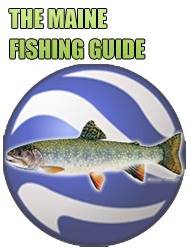It’s mid-August, and summer is waning. While the kids may be a bit sullen about the imminent opening of school, it is also a fantastic time to go fishing.
Nights are cooling down. Gone are the long, sultry days of summer that seemed to bring your favorite fishing hole to a slow simmer. Water temps have reversed their upward climb, and fish that rarely seemed to move during the day are once again feeding.
This is a great time to try one of Maine’s many smaller ponds for warm-water species such as bass, white perch, crappie and pickerel.
But where? If you are looking for some new spots to try, go online. Try out Google Earth, equipped with the Maine Department of Inland Fisheries and Wildlife’s Maine Fishing Guide.
The Maine Fishing Guide lets the user add different map layers on top of Google Earth satellite photos. Among just a few of the layers that a user can add are lake depths, fish species, topographic maps, boat launches and even registered Maine Guides, sporting camps and tackle shops.
The Google Earth software and the Maine Fishing Guide are free, and you can download them right at www.mefishwildlife.com.
I have been hooked on fishing small ponds ever since I was a young kid and asked a local farmer if I could fish his pond from the banks. My first cast hit the surface of the water and it exploded. I didn’t even come close to landing that fish, promptly snapping the line since I had yet to comprehend the finer points of setting the drag, but I was hooked.
For many summers and even some school-day afternoons, I would bike around town, hands clasped to both my fishing rod and handlebars and weaved my way through gravel roads, dirt paths and even tarred streets to ponds many people overlooked as fishing destinations.
As I got older, I started using a Jeep and a DeLorme Atlas and Gazetteer. I still have one of my early gazetteers from the late ’80s, scribbled with descriptions of catches, stocking news, landowner names and numbers, and other information.
While I do miss the portability of the gazetteer, the wealth of information on the Maine Fishing Guide makes me soon forget.
This past weekend I was in an area of the state where I had not fished much, but was excited to try some new areas. A few days before we were to leave, I opened up Google Earth, and having already downloaded the Maine Fishing Guide, I started to select the different layers that would help me choose a pond.
First, I selected smallmouth bass, and a series of small bass appeared over a number of waterways in the area. I then selected the lake depths, boat launches, and town and county lines. Once the layers appeared, I zoomed in and started looking a little closer.
Most of the satellite photos offer surprising detail, and you can even see structure such as large rocks along the ponds and lakes. In some areas you can see drop-offs, ledges and sand bars.
I chose two water bodies that were about five miles from each other. At one lake, I could even see two vehicles parked where I intended to fish.
I did catch several smallmouth at both spots, and I certainly will be heading back, particularly to the pond where I lost a smallmouth that I first thought was a largemouth because of the size of its jaw, which I got a good look at right before it spit my lure right back at me.
While the Maine Fishing Guide is a wonderful tool, there are still a few features I would love to see the department add to make it even better. While it lists Maine’s heritage brook trout waters, it doesn’t have stocking information. Even though the fishing guide lists the pond name, its depths and even the types of fish present, it does not have the fishing regulations for that water body.
All that information is available on IFW’s web page, just a few clicks away, but to put it on a Google Earth layer would certainly make for one-stop shopping.
I find myself exploring the fishing guide, much the same way I used to browse the DeLorme Gazetteer, seeking out new spots and new fish. This fall, I am going to use it to find a pond nearby that has some crappie, and later for a road trip to find some muskie.
But when I load up the truck for the day’s adventure, I will still carry that worn Delorme Gazetteer with me, because the roads to the best places to fish never seem to have an Internet connection.
Mark Latti is a former public information officer for the Maine Department of Inland Fisheries and Wildlife and a registered Maine Guide. He can be reached at:
mlatti@gmail.com
Send questions/comments to the editors.



Success. Please wait for the page to reload. If the page does not reload within 5 seconds, please refresh the page.
Enter your email and password to access comments.
Hi, to comment on stories you must . This profile is in addition to your subscription and website login.
Already have a commenting profile? .
Invalid username/password.
Please check your email to confirm and complete your registration.
Only subscribers are eligible to post comments. Please subscribe or login first for digital access. Here’s why.
Use the form below to reset your password. When you've submitted your account email, we will send an email with a reset code.